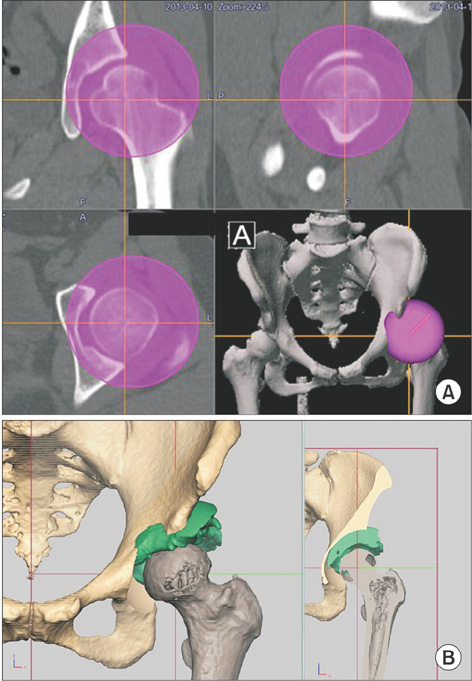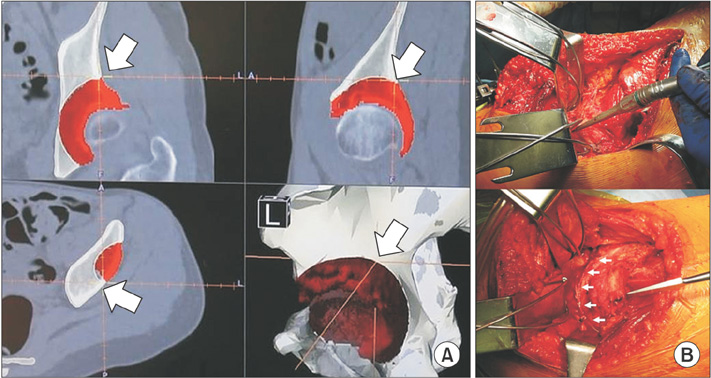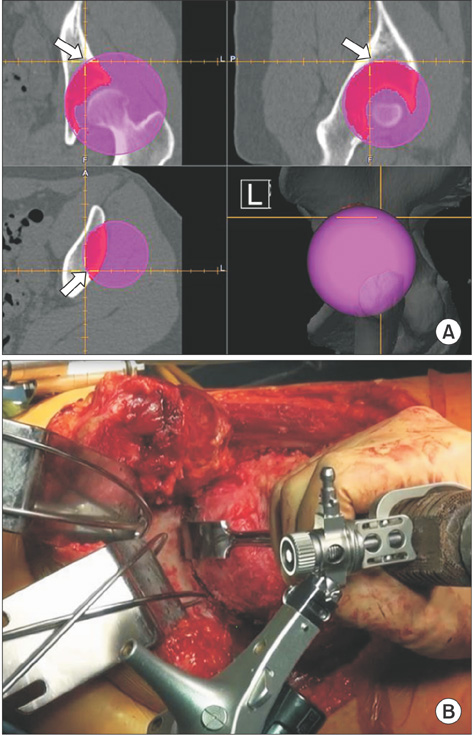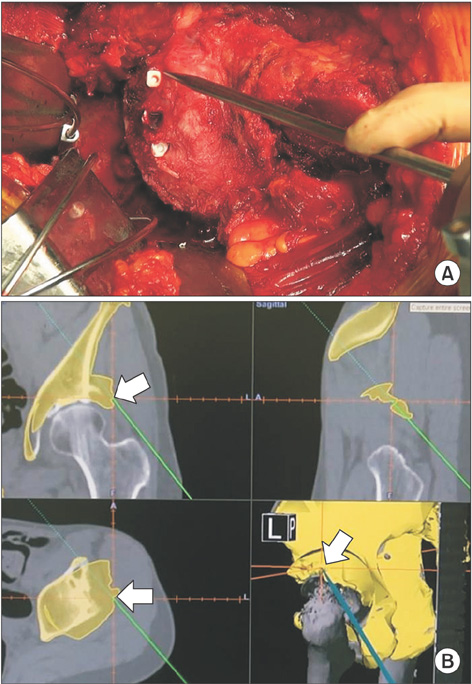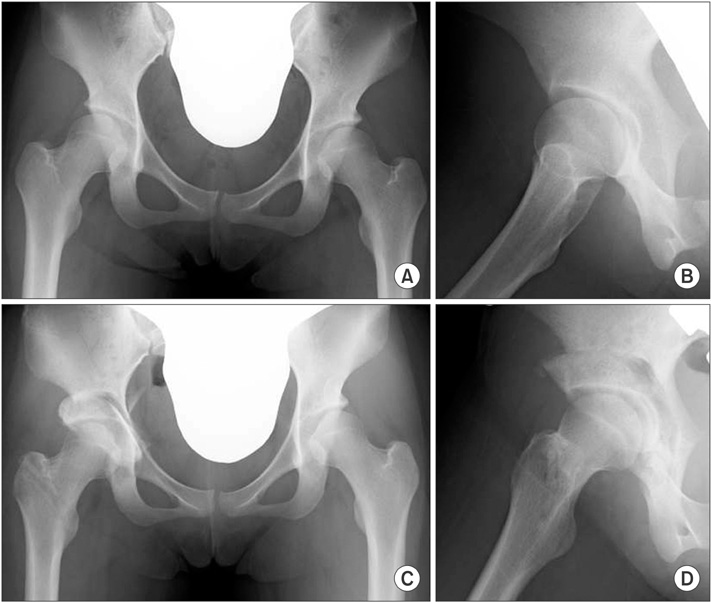Clin Orthop Surg.
2016 Mar;8(1):99-105. 10.4055/cios.2016.8.1.99.
Computer-Assisted Rotational Acetabular Osteotomy for Patients with Acetabular Dysplasia
- Affiliations
-
- 1Department of Orthopaedic Surgery, Yokohama City University, Yokohama, Japan. yute0131@med.yokohama-cu.ac.jp
- KMID: 2363952
- DOI: http://doi.org/10.4055/cios.2016.8.1.99
Abstract
- Rotational acetabular osteotomy (RAO) is a well-established surgical procedure for patients with acetabular dysplasia, and excellent long-term results have been reported. However, RAO is technically demanding and precise execution of this procedure requires experience with this surgery. The usefulness of computer navigation in RAO includes its ability to perform three-dimensional (3D) preoperative planning, enable safe osteotomy even with a poor visual field, reduce exposure to radiation from intraoperative fluoroscopy, and display the tip position of the chisel in real time, which is educationally useful as it allows staff other than the operator to follow the progress of the surgery. In our results comparing 23 hips that underwent RAO with navigation and 23 hips operated on without navigation, no significant difference in radiological assessment was observed. However, no perioperative complications were observed in the navigation group whereas one case of transient femoral nerve palsy was observed in non-navigation group. A more accurate and safer RAO can be performed using 3D preoperative planning and intraoperative assistance with a computed tomography-based navigation system.
MeSH Terms
Figure
Reference
-
1. Ninomiya S, Tagawa H. Rotational acetabular osteotomy for the dysplastic hip. J Bone Joint Surg Am. 1984; 66(3):430–436.
Article2. Nozawa M, Shitoto K, Matsuda K, Maezawa K, Kurosawa H. Rotational acetabular osteotomy for acetabular dysplasia: a follow-up for more than ten years. J Bone Joint Surg Br. 2002; 84(1):59–65.3. Takatori Y, Ninomiya S, Nakamura S, et al. Long-term results of rotational acetabular osteotomy in patients with slight narrowing of the joint space on preoperative radiographic findings. J Orthop Sci. 2001; 6(2):137–140.
Article4. Massie WK, Howorth MB. Congenital dislocation of the hip. Part I: method of grading results. J Bone Joint Surg Am. 1950; 32(3):519–531.5. Iwana D, Nakamura N, Miki H, Kitada M, Hananouchi T, Sugano N. Accuracy of angle and position of the cup using computed tomography-based navigation systems in total hip arthroplasty. Comput Aided Surg. 2013; 18(5-6):187–194.
Article6. Akiyama H, Goto K, So K, Nakamura T. Computed tomography-based navigation for curved periacetabular osteotomy. J Orthop Sci. 2010; 15(6):829–833.
Article7. Langlotz F, Bachler R, Berlemann U, Nolte LP, Ganz R. Computer assistance for pelvic osteotomies. Clin Orthop Relat Res. 1998; (354):92–102.
Article8. Hsieh PH, Chang YH, Shih CH. Image-guided periacetabular osteotomy: computer-assisted navigation compared with the conventional technique: a randomized study of 36 patients followed for 2 years. Acta Orthop. 2006; 77(4):591–597.
Article9. Tokunaga K, Watanabe K. Accuracy of the surface-match registration on the inner table of the pelvis in the CT-based navigation for the curved periacetabular osteotomy. Hip Joint. 2012; 38:161–165.10. Tsumura H, Kaku N, Ikeda S, Torisu T. A computer simulation of rotational acetabular osteotomy for dysplastic hip joint: does the optimal transposition of the acetabular fragment exist. J Orthop Sci. 2005; 10(2):145–151.
Article
- Full Text Links
- Actions
-
Cited
- CITED
-
- Close
- Share
- Similar articles
-
- Stress Distribution According to Center-Edge Angle in Dysplastic Hip and the Biomechanical Effect of Rotational Acetabular Osteotomy
- Rotational acetabular osteotomy in acetabular dysplasia
- Rotational Acetabular Osteotomy for the Dysplastic Hip: A Follow-up for 5 to 18 years
- Rotational Acetabular Osteotomy for the Dysplastic Acetabulum
- Rotational Acetabular Osteotomy

